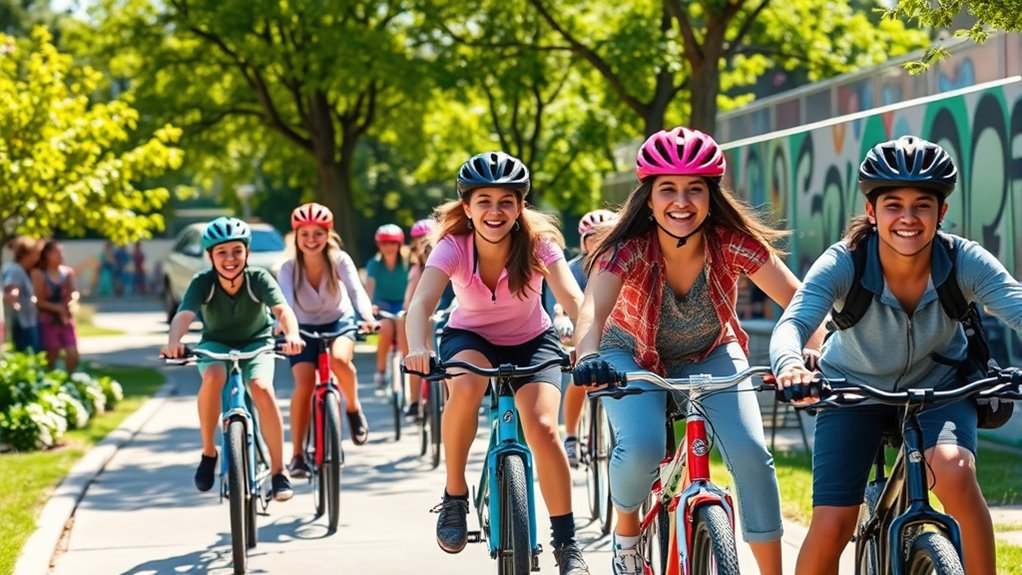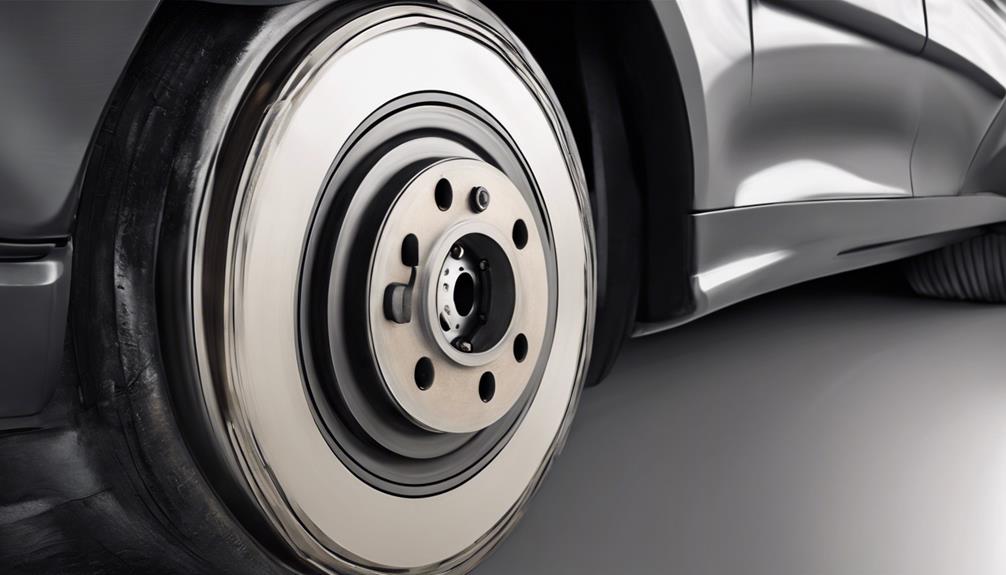Youth engagement in cycling is booming thanks to school programs, infrastructure improvements, and community support. Initiatives like biking education, mentorship, and safety gear donations boost confidence and skills. Community rides, urban projects, and international competitions further inspire young riders. Many barriers are being addressed through resource sharing and policy changes, making cycling more accessible. If you want to understand how these programs are transforming communities and empowering youth, keep exploring these exciting developments.
Key Takeaways
- School-based cycling initiatives increase active commuting and promote lifelong safety habits among youth.
- Mentorship and community programs build confidence, leadership, and social bonds through group rides and challenges.
- Donation and recycling programs enhance access to bikes and gear, removing resource barriers for underserved youth.
- Infrastructure improvements and urban programs like bike buses boost accessibility and interest in youth cycling.
- International and local youth cycling programs, including competitive teams, foster skill development and cultural engagement.
The Impact of School-Based Cycling Initiatives
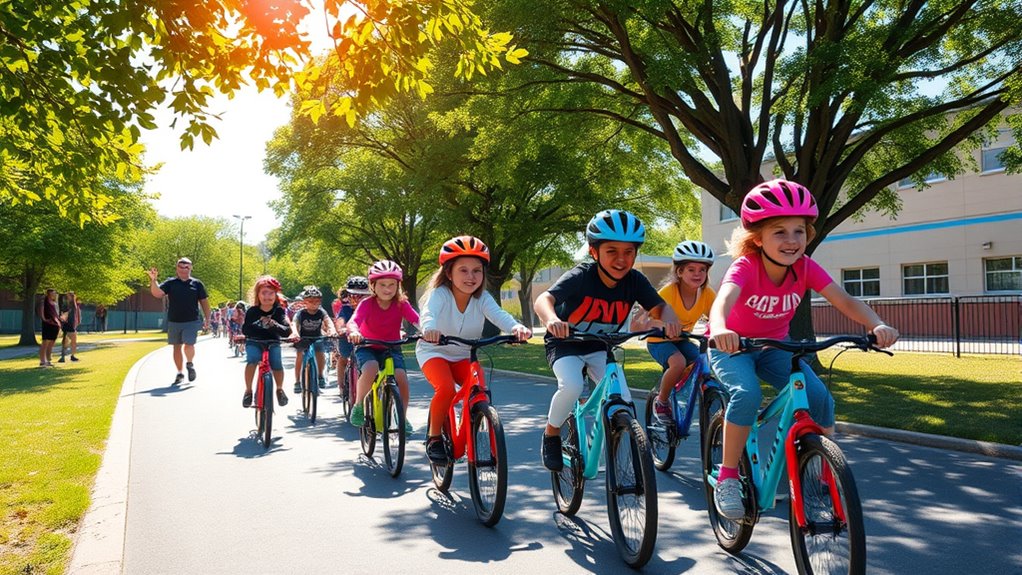
Have school-based cycling initiatives truly transformed students’ commuting habits and health? Evidence shows they’ve made a significant impact. Despite high bike ownership, many students still don’t cycle to school, but intervention programs increase active commuting from 52.3% to 81.6%. Furthermore, integrating cycling education into school curricula helps foster a culture of safety and awareness among students. Schools incorporate cycling into PE classes to develop lifelong habits, while federal Safe Routes to School programs improve infrastructure, education, and enforcement. These efforts teach safety skills and promote multi-modal transportation choices.
Cycling also benefits physical and mental health, enhancing cognition, reducing sick days, and supporting resilience. It lowers stress, boosts mood, and improves overall fitness.
Building Community and Confidence Through Cycling
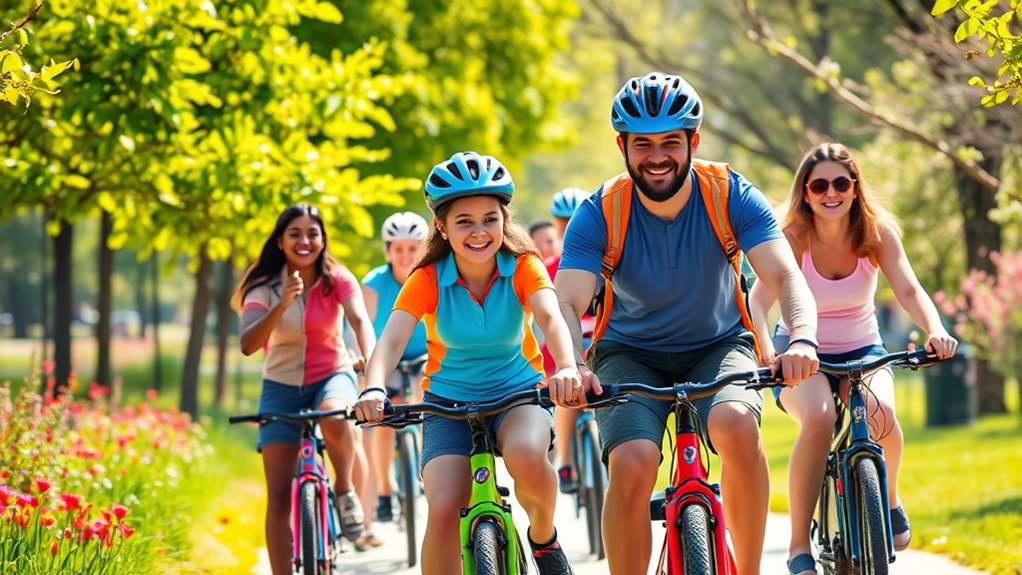
Building community and confidence through cycling transforms how you connect with your surroundings and develop essential life skills. When you participate in structured mentorship programs, trained volunteers guide you in bike safety and life lessons, fostering trust and accountability.
As you master new skills through progressive challenges, your self-efficacy and resilience grow. Leadership roles, like mentoring newcomers, further boost your confidence. Group rides and community visits strengthen neighborhood ties and social bonds. Incorporating diverse learning methods caters to different learning styles and enhances overall program effectiveness.
Bilingual coaching guarantees everyone feels included, while outreach rides highlight local landmarks and green spaces. These experiences cultivate emotional resilience, teamwork, and communication skills. Recognizing the importance of early detection of health issues encourages participants to stay attentive to their well-being and seek help when needed. User privacy preferences and cookie management options ensure a safe and enjoyable online experience as you participate in these initiatives. Additionally, understanding color accuracy can enhance the visual appeal of cycling safety materials and educational displays, making information clearer and more engaging.
With full equipment support and inclusive programs, you gain confidence and a sense of belonging, empowering you to engage actively in your community through cycling.
Overcoming Barriers: Resources and Equipment Support
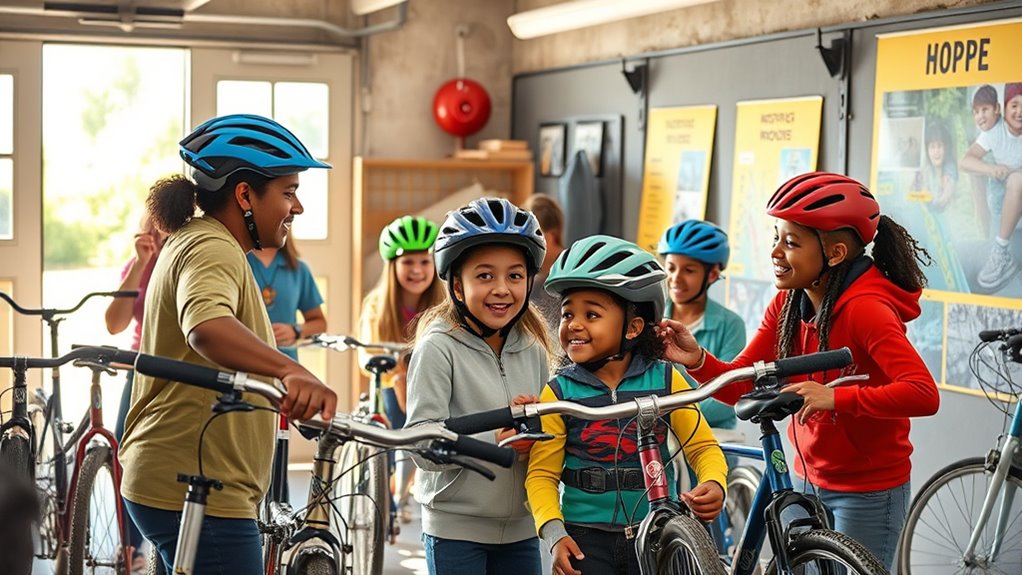
As cycling programs expand their reach within communities, addressing barriers related to resources and equipment becomes increasingly important. You can access support through donation-driven systems that provide bikes, gear, and trainers to those in need.
Fundraising events and corporate partnerships help cover participation costs, while recycling gently used equipment guarantees more youth have gear to ride. Equipment recycling programs contribute to a sustainable approach that benefits both the environment and participants.
Grant programs like the Bike Legal Junior Cycling Grant focus on families facing financial hardship, offering funds for bikes, gear, race fees, and training. Additionally, understanding and managing cost variances can help organizations better allocate resources and improve budgeting for these programs.
Equipment accessibility initiatives, such as bike libraries and size-specific inventories, make riding more inclusive. Additionally, safety gear and coaching networks help lower skill barriers. Incorporating community infrastructure like bike lanes and safe riding routes further promotes participation among youth.
These resources ensure that financial constraints don’t prevent young riders from enjoying cycling and building confidence in the sport.
Trends and Challenges in Youth Cycling Engagement

Recent trends show that youth cycling experienced a significant resurgence during the COVID-19 pandemic, reversing years of declining participation. This boost is driven by new generations motivated by initiatives to engage youth and the mental health benefits cycling offers, like stress reduction and improved mood.
Cities are implementing innovative urban programs, such as “bike bus” and “school street” schemes, to make cycling more accessible and appealing. Federal support is also helping improve infrastructure, making urban environments safer for young riders.
However, challenges remain, especially as participation tends to decline with age, partly due to limited bike access and a disconnect between adults and youth cycling preferences. Resistance to urban cycling projects and health concerns further complicate efforts to sustain youth engagement in cycling.
Expanding Opportunities: International and Local Programs

Expanding opportunities for youth cycling involves both international and local programs that foster skill development and competitive experience.
Internationally, programs sanctioned by UCI, like junior races, offer young riders exposure to high-level competition, cultural adaptation, and diverse racing environments. Teams such as LUX Cycling incorporate travel and racing abroad, broadening riders’ perspectives.
UCI-sanctioned junior races and teams like LUX Cycling expand youth cycling through international competition and cultural exchange.
However, infrastructure differences, especially between Europe and the U.S., can impact skill development.
Locally, organizations like USA Cycling Centers of Excellence provide safe, structured environments for juniors and U23 athletes, offering extensive pathways from grassroots to elite levels. Funding through grants and sponsorships supports this growth.
Specialized programs, such as track cycling initiatives, also prepare athletes for international competitions, ensuring more youth can access high-quality training and competitive opportunities across disciplines.
Frequently Asked Questions
How Do Cycling Programs Adapt for Students With Disabilities?
You can adapt cycling programs for students with disabilities by offering specialized equipment like hand cycles, recumbent tricycles, and customized bikes. These bikes help accommodate mobility, balance, and stability needs.
You also involve families and train them to support ongoing progress.
Additionally, partnering with local organizations and securing grants allows you to expand access, ensuring every student can safely enjoy cycling, build confidence, and develop skills.
What Are the Funding Options for Starting a Youth Cycling Initiative?
You can explore various funding options to start a youth cycling initiative. Look into grants like Community Spark Grants, which support local projects, and USA Cycling Grants, offering equipment and cash for young riders.
The Outride Fund provides unrestricted funds for underserved communities, while partnerships with organizations like PeopleForBikes can also help. Additionally, tools from Instrumentl can connect you with multiple grant opportunities to get your program off the ground.
How Do Programs Measure Improvements in Students’ Mental Health?
Ever wonder how you can tell if a cycling program truly helps students? You measure improvements through surveys and psychosocial assessments that track changes in mental health and well-being.
These tools reveal even small positive shifts, considering factors like gender, race, and socioeconomic status. By monitoring physical activity, sleep, and participation in activities, you get a clearer picture of how cycling impacts students’ mental health over time.
What Strategies Increase Participation Among Reluctant or Underserved Youth?
To increase participation among reluctant or underserved youth, you should focus on family-focused engagement by involving parents and offering resources like safety workshops and ride planning.
Building community through themed rides and low-stress routes helps reduce intimidation.
Collaborate with schools, local businesses, and bike shops to create accessible programs, and recruit volunteers to mentor.
These strategies foster trust, inclusivity, and a sense of belonging, encouraging more consistent participation.
Are There Certifications or Awards for Students Completing Cycling Programs?
You might wonder if there are certifications or awards for students finishing cycling programs. Many organizations offer recognition, like badges, certificates, or awards that celebrate their achievements.
For example, some programs provide completion certificates, skill badges, or recognition events. These incentives motivate students to stay engaged and build their confidence.
You can encourage participation by emphasizing these rewards, showing students their progress and accomplishments in a tangible, meaningful way.
Conclusion
By getting involved, by supporting programs, and by embracing opportunities, you can help youth discover confidence, build community, and overcome barriers. When you encourage participation, provide resources, and promote access, you empower young people to thrive through cycling. Together, you can foster a future where every youth rides with purpose, every community rides with pride, and every challenge becomes an opportunity for growth. Your engagement makes a difference—because cycling isn’t just a sport; it’s a movement.
